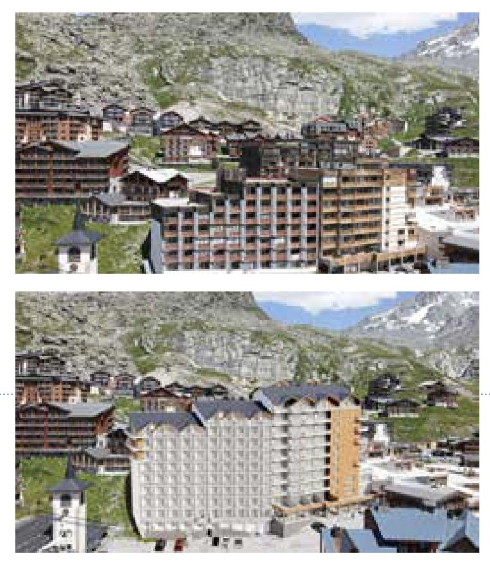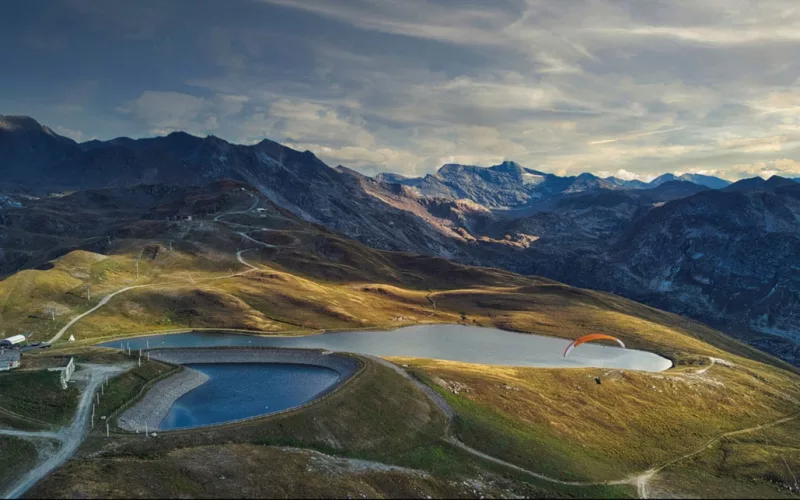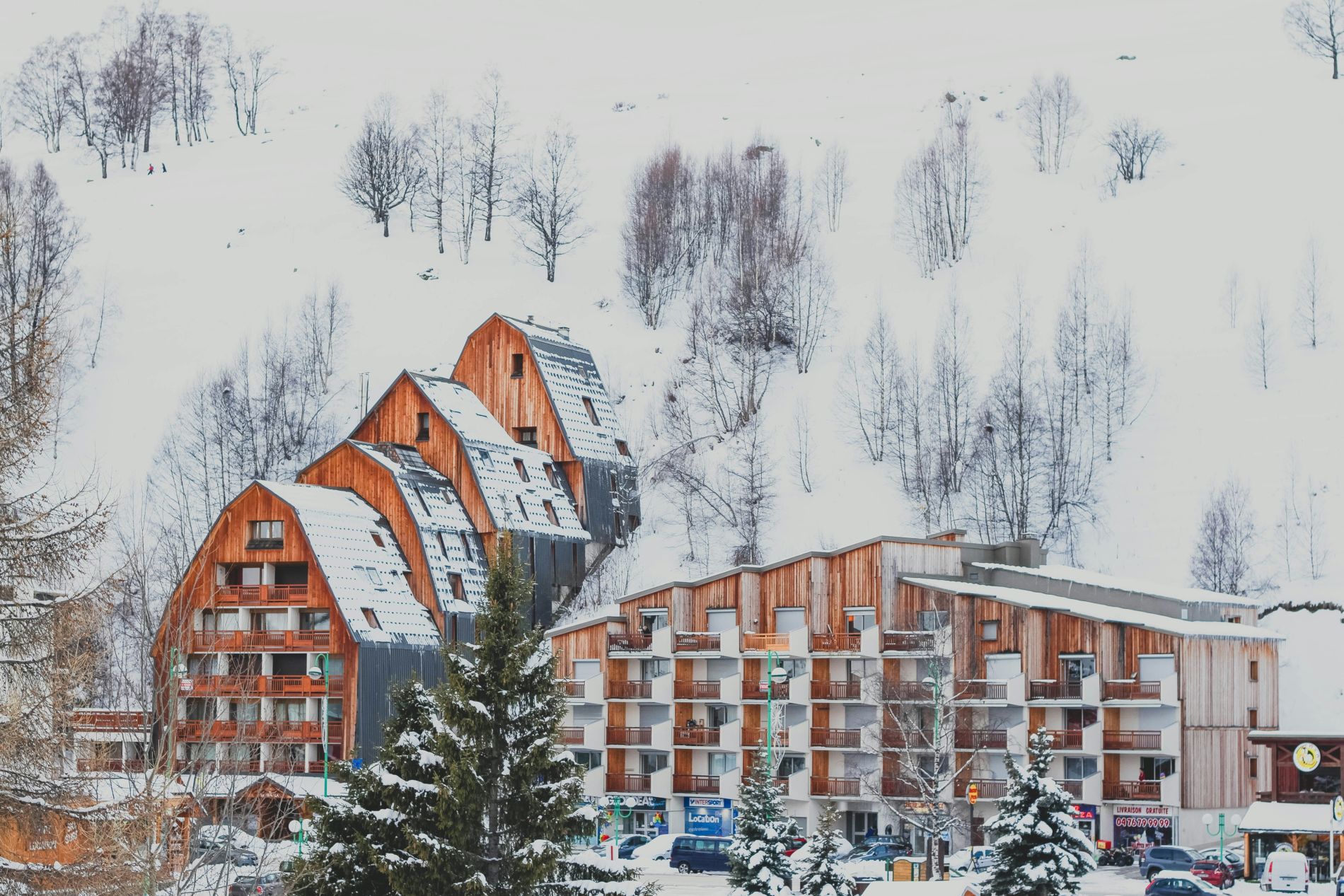During the 2024 edition of the Mountain Planet trade show, several highly anticipated conferences took place. These focused on the topic of energy renovation for mountain housing. Indeed, the building sector plays a significant role in environmental transitions, and the stakes are high as the tourism real estate in ski resorts is aging. In France, more than 80% of it consists of secondary residences, with many tourism properties built over 30 years ago. Here’s an overview of the trends and innovations in sustainable renovation work in mountain areas.

Marie-Soriya AO (General Delegate of the Eco-Building Cluster) – Mountain Planet 2024
The building sector alone accounts for 43% of France‘s annual energy consumption. Second only to passenger transport, buildings generate 25% of France’s greenhouse gas emissions (source: BBCA). This is mainly due to the massive use of materials like concrete, steel, and glass in construction projects.
In light of these facts, combined with the issue of energy sleeves and “empty beds,” ski resorts, mountain towns, and tourism stakeholders are mobilizing. Their common goal? To encourage property owners, landlords, and occupants to carry out insulation work on their homes and to assist them in benefiting from renovation aids, resulting in better energy performance and compliance with new regulatory expectations.
This theme was discussed during the 50th anniversary of the Mountain Planet trade show, with the ANEM (French National Association for Elected Officials in Mountainous Regions) and elected town representatives in attendance. The conference “Leisure Real Estate: The Challenges of Energy Renovation” is available to watch in full here.
Accommodation and Energy Renovation: A Model to Reinvent
The international Mountain Planet trade show also covers this broad topic in its latest edition of the Innovation Book #4. Among the many articles, one is dedicated to mountain housing and the energy transition (pages 88 to 90). It discusses building envelope insulation in ski resorts, energy performance optimization work, aesthetics, comfort, shared services, and creating new living spaces through elevation. In conclusion, ski resort accommodations must adapt to climate change and reinvent themselves.

What are the trends?
During its presentation at the Ski and Mountain Resort Development trade show in April 2024, the Eco-Building Cluster discussed new paths to explore. These included deconstruction and material reuse, the functionality economy of buildings (replacing property sales with the rental of their use), and frugal architecture aiming to balance tradition and modernity.
This architectural movement respects living organisms more, prioritizes insulation and transformation of existing structures over new construction, and favors renewable materials, local expertise, and sustainable technical solutions. This approach is particularly aligned with the renovation or wood construction in ski and mountain resorts.
Energy Renovation Work: Dates and Aids
Reducing the number of energy sleeves—properties that are poorly insulated and energy-intensive in heating—is the goal of the Climate and Resilience Law. This law aims to accelerate housing renovation to achieve carbon neutrality by 2050. As a result, the rental of the most energy-consuming properties will be progressively banned, particularly affecting poorly insulated tourist rentals in ski and mountain resorts. Consequently, municipalities are increasing their awareness campaigns about key dates and available financial aids.
Rental Ban Timeline:
- G-rated properties > 2025
- F-rated properties > 2028
- E-rated properties > 2034
Note: Among the energy renovation aids available are MaPrim’Rénov, the Loc’Avantages scheme, reduced VAT rates, local government aids, energy vouchers, the Denormandie scheme, land deficit, and the zero-interest eco-loan.
a lire également
Sustainable development

27 May 2024
Eco-responsible tourism in the mountains, for a sustainable future
SUSTAINABLE DEVELOPMENT In April 2024, mountain stakeholders gathered in Grenoble Alpes Métropole, France. At the Mountain Planet trade show, 23,000 professionals exchanged ideas and shared their vision for the present and ...
Sustainable development

27 May 2024
Eco-responsible tourism in the mountains, for a sustainable future
SUSTAINABLE DEVELOPMENT In April 2024, mountain stakeholders gathered in Grenoble Alpes Métropole, France. At the Mountain Planet trade show, 23,000 professionals exchanged ideas and shared their vision for the present and ...
Innovation

27 May 2024
Sustainable Innovation for Year-Round Mountain Tourism
Fifty years after the “Plans Neige” in France, ski resorts in our mountain regions are facing the full impact of climate change. To anticipate a future where winter tourism might ...


